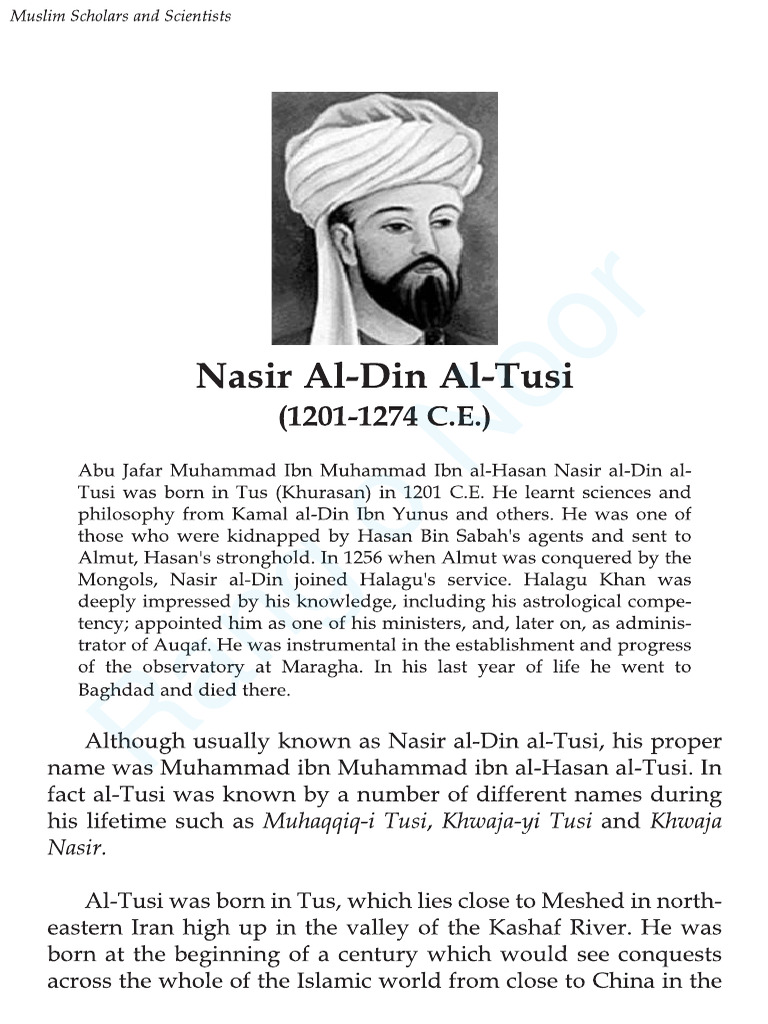In the rich tapestry of Islamic intellectual tradition, the eminent scholar Nasir al-Din al-Tusi emerges as a beacon of enlightenment, illuminating the paths of Shia teachings with his profound insights. His contributions traverse the chasms of theology, philosophy, and science, harmonizing disparate fields into a cohesive narrative that resonates with the essence of Shia thought. This article delves into the unique appeal of al-Tusi’s teachings, emphasizing the intricate interplay between his philosophical acumen and Shia doctrine.
Born in 1201 in Tus, Iran, al-Tusi was no ordinary scholar. He is often regarded as a polymath, a figure whose intellect traversed the realms of logic, astronomy, mathematics, and ethics. Within the Shia tradition, his works are not merely academic exercises; they are the keystones that bolster the theological edifice of Shia Islam. His magnum opus, “Tahrir al-Maqal,” epitomizes his approach to synthesizing rational thought with faith, heralding an era where skepticism and devotion could coalesce.
One of the most intriguing aspects of al-Tusi’s philosophy is his notion of the ‘unity of being’ (wahdat al-wujud). This concept underlines the belief that all existence emanates from a singular reality—the divine essence. It posits that multiplicity in the world is an illusion, much like a hall of mirrors reflecting one underlying truth. Such a perspective is particularly appealing in Shia Islam, as it reinforces the idea of divine guidance manifesting through the Imams, who serve as both spiritual leaders and exemplars of this singular essence. Thus, adherents are encouraged to navigate the complexities of life through the lens of a unified divine purpose.
Moreover, al-Tusi’s engagement with the rational sciences was groundbreaking. In an era often deemed the ‘dark ages’ for scientific inquiry, he championed empirical observation and mathematical rigor. His astronomical treatise, “Zij,” not only corrected Ptolemaic inaccuracies but also advanced methods of calculating planetary movements that are foundational in the field. This amalgamation of science and faith challenges the narrative that religion and rationality stand in opposition; instead, it illustrates how they can coexist harmoniously within a Shia framework.
Tags
Share this on:
[addtoany]


